The hollow men
exhibition from Wednesday, September 13 to Sunday, November 12.
Catholic University of Lille
60, boulevard Vauban- 59000 Lille
huile | sur lin
Il faut décider
146 x 114 cm
2003

acrylique | toile-lin
Fin de mission- Tokyo
146 X 114 cm
2003
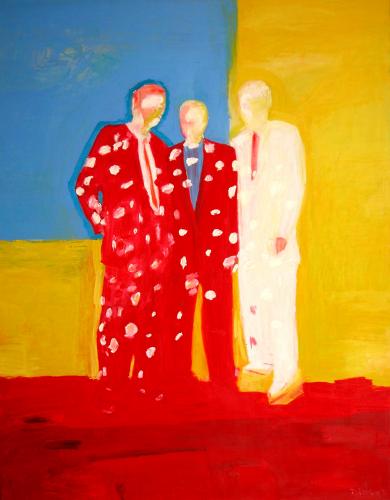
huile | toile-lin
Le conseiller
195 x 130 cm
2003
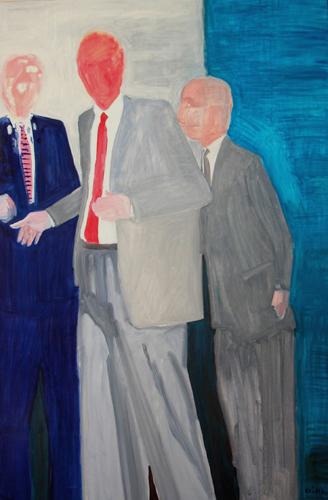
fusain & sanguine | papier
(Etude) "On compte sur vous"
28 x 21 cm
2003
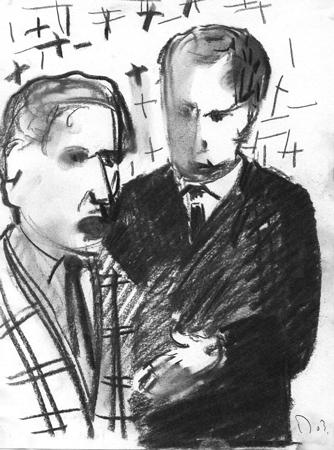
aquarelle | papier
(Etude) "Attente polie"
28 x 37 cm
2003
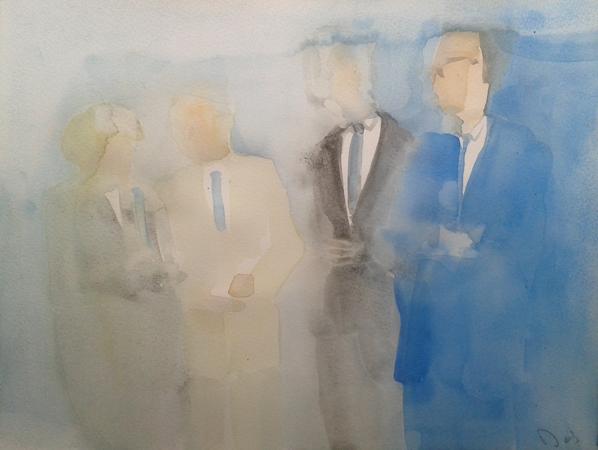
encre | papier
Dialogue
65 x 50 cm
2003
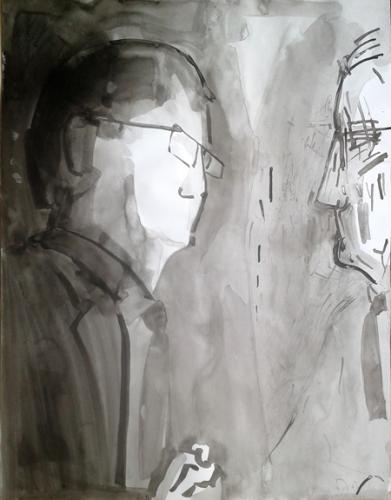
mine de plomb | papier
Esquisse - Je vous l'ai dit
21 x 29,7 cm
2003
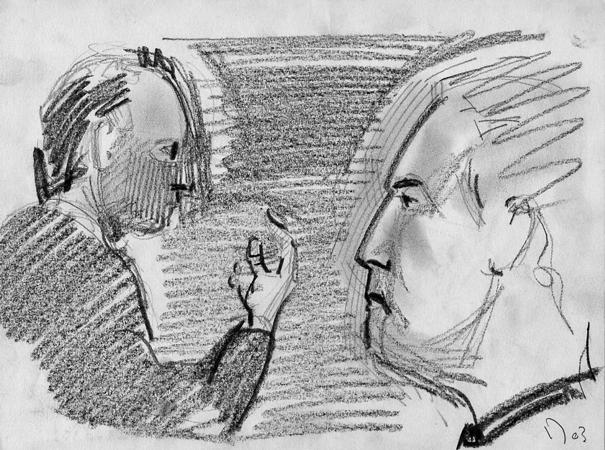
aquarelle | papier
étude - Seul
2003
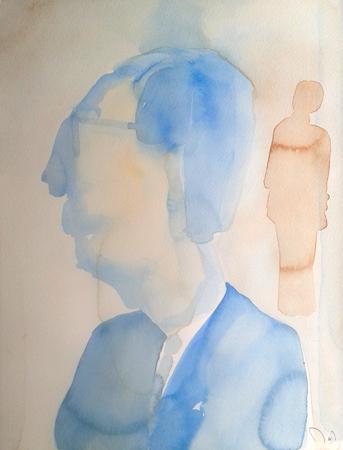
Thierry Diers, The Hollow men
Roaring picture
When Thierry Diers, who worked with big !rms, offered them to take part in the plan for an
exhibition and for a catalogue on his work as a painter, a lot of them gave their agreement in
principle. When the artist explained his plan precisely – its contents, its pictures, the spirit which is
dwelling in it – all of them politely drew back.
What was so dangerous that so solid structures consider there is a risk to help to the birth of this
plan and its pictures’ book ? Was it because they saw in it their own portrait ?
Because of these activities, as an architect and a painter, Thierry Diers knows the decision-makers.
For them, he designed areas and he carried out innovatory concepts to provide humanity and
sensitivity to places made for pro!tability, and where the walls bear the signs of human relationships
whose "avour is sometimes provocative. Thierry has been a lively witness of these exchanges which
take place only at work, a social arena where mocking looks, terse comments, fake greetings and
true stabs in the back struggle away at you. Thierry Diers wanted to illustrate these ‘handshakes
which never occur’, the disgraces, the muttered talks, … .
Thanks to this professional and human bicephaly, the ‘Hollow Men’ series was born.
The designer has been invited to attend in these buildings, to be entrusted with some mission. He
said he was treated as ‘the artist’ (that is to say, in this world, as ‘the blockhead’), so that he was
allowed to be admitted into the company’s private life, thus lowering their guard. He is apparently
harmless : he does not hold the purse strings, does not aim at the deputy chief position and will not
go and sneak to anyone what Mr or Mrs so-and-so told about another one once the door was closed.
The wolves think a lamb has gone for a walk among the pack, and yet…
The architect had the painter in his pockets (unless it is the opposite), and it was more than as
a passive witness that Thierry Diers observed these exchanges whose name only is human. Here
Diers’s work !nds its true meaning : the architect as well as the painter is completely devoted to the
understanding and the expression of the building of relationships between human beings.
Thierry Diers is an abstract expressionist painter. His canvasses usually offer big bunches of colours,
violently arranged on the drawing. They are sentimental, intimate and universal, they invite to
introspection, emotion or to a particular physical link with the pictorial matter. They are rarely about
human !gures, never about politics. Yet here, the artist has felt a desperate need to depict straight
away what he witnessed. The ‘Hollow Men’ series is a fault in Diers’s path, an urgent springing
up which compelled a clear assertion. In the following text, Yves Michaud quickly compares Diers
and the American painter Philipp Guston, an illustrious abstract expressionist. What needs to be
mentioned is that Guston, before being one of the 1950’s biggest non-representational artists is then
considered as Pollock’s equal, was a frenzied political painter who denounced racial and social
violences, and that he turned himself back to the paths of !guration in 1970, painting racism and
imperialism, declaring that abstract art, in hard times, was unsuited to speak about the world and
even less than to change it. He was treated like dirt by the art critic and part of the art circle. If
it is not easy to organize into a hierarchy the genres of paintings, Guston, as well as Diers, have
each of them felt the urge to tell reality in the most explicit way, toning down a bit the usual and
discreet purge of their means. In 2015, the pictures have kept all their strength. In January in Paris,
about ten people have been killed because of pictures. At the time when I’m writing these lines, one
speaks about the eviction of the ‘Guignols de l’info’. This book is self-edited whereas it should be
otherwise. In 2015, the pictures have kept all their strength indeed.
Nicolas-Xavier Ferrand